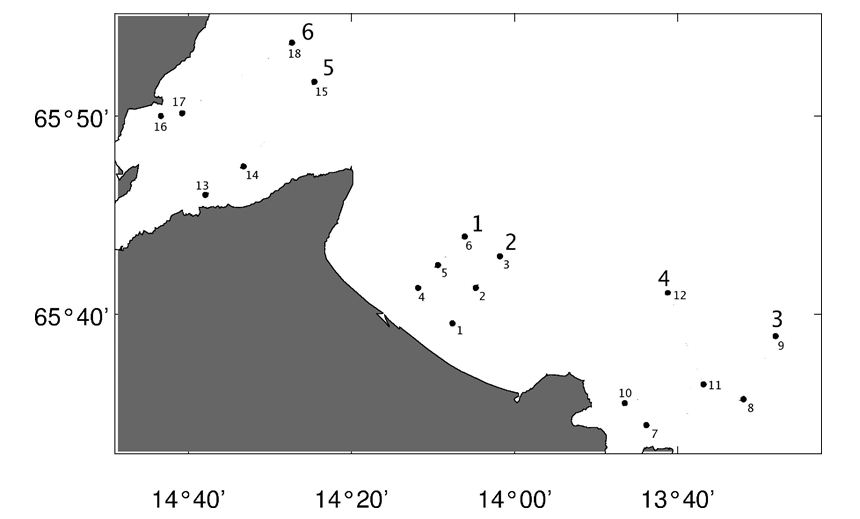Progress
The survey conducted in 2006 did not show a large variation in faunal communities between Héraðsflói and the other two reference locations but showed rather similar communities based on sediment type. Two separate groupings were observed, where faunal communities in sandy sediments at the stations were considered one group and communities in mixed and clayish sediments were the other. The results from the survey conducted in 2019 showed the same trend, where the faunal communities were grouped by sediment type and not a distinct separation of Héraðsflói and the reference sites. However, it was observed that station 1, closest to the river input in Héraðsflói, showed some changes in sediment composition, reduction in abundance and a number of taxa and changes in taxa composition between 2006 and 2019 that could be related to river sediment discharges, but also annual changes. The overall taxonomical composition at the different study sites from 2019 is comparable to the case study in 2006, and no major changes related to the changed river outflow were apparent, but it is important to emphasise that any fluctuations in the years between the two surveys were not covered.
Metrics, Targets and Monitoring Protocol
What is measured?
- Grain size and distribution of sediment in selected sample plots. (Project effect: indirect)
- Diversity and density of benthic fauna at selected sampling spots. (Project effect: induced).
Monitoring Protocol
Data will be collected in three areas: Héradsflói, and in Vopnafjordur and Borgarfjordur East for comparison. In each area six monitoring stations will be established and three samples taken at each station. The following factors will be monitored:
- Temperature and salt
- Grain size and the amount of organic matter in sediment
- Bethnic fauna species
Collection of data will begin in 2006 and will be repeated at regular intervals, it is not yet decided how often, but the next data collection is planned around 2020
Targets
Will monitor and report data and aim for reserving diversity and density of benthic fauna at selected spots.
Possible countermeasures
Not applicable, monitoring only.
Changes of indicator
This indicator was originally number 28.1. It was then named Marine Benthic Fauna in Héraðsflói Bay and can be found under that number in documents of the project from 2005 and 2006.
The indicator number has been changed twice.
| Year | Nr. | Indicator name |
|---|---|---|
| 2020 | 2.4.2 | Marine Benthic Fauna in Héraðsflói Bay |
| 2007 | 2.26 | Marine Benthic Fauna in Héraðsflói Bay |
Baseline
Bethnic fauna in Héradsflói Bay and Borgarfjordur is similar, but there is more of the fine kind of sedimentation in Borgarfjordur. Vopnafjördur has a higher ratio of the fine kind, and the carbon content is obviously highest there. On all of the areas, there are reigning species of lugworm that take feed from the surface. There also turned out to be a community of lugworms that dig themselves down and feed from the sediment. The fauna was mainly split ino two communities, see graph below. The overall outcome of the baseline study is that the biosphere of the bays is similar, and the same specied typical at all sampling places. You can view a profile of sampling and stations in Vopnafjörður, Héradsflói and Borgarfjorður by clicking the image to the right.
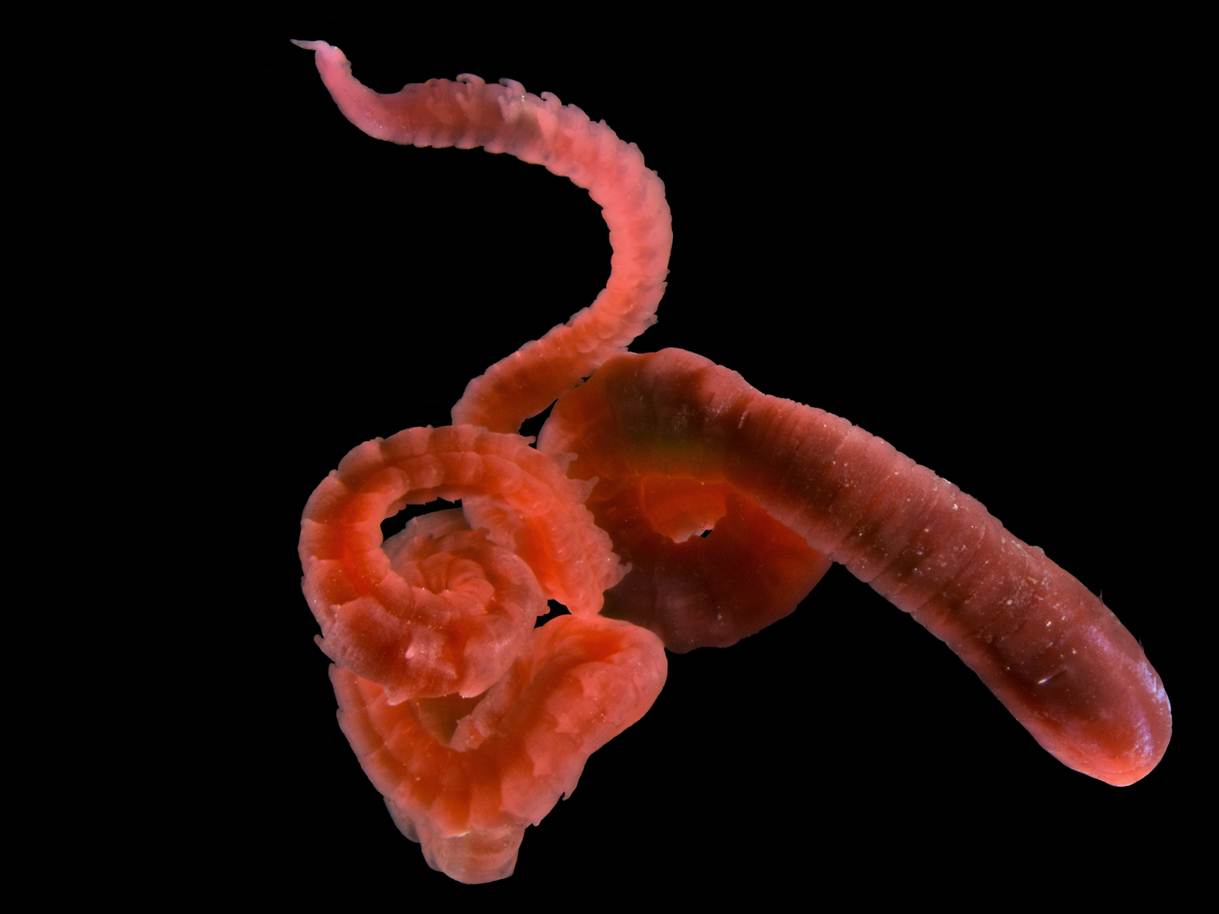 |
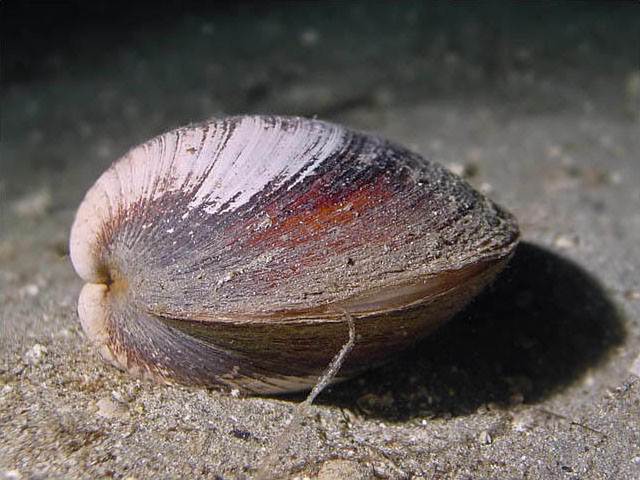 |
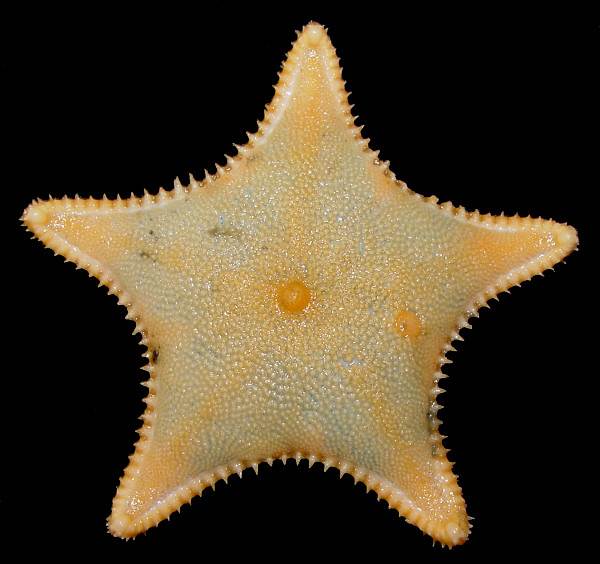 |
| Heteromastus filiformis | Arctica islandica | Ctenodiscus crispatus |
Rationale for Indicator Selection
Changes in the flow of water and sedimentation in rivers are the two factors related to the projects that are most likely to affect the marine ecosystem in Héraðsflói Bay. Fljótsdalur Power Plant will greatly impact the flow of fresh water into the Bay, especially in late summers when discharge is expected to be about 200 to 300 m3 per second instead of 600 to 700 m3 per second as it is currently. The fresh water that enters the Bay floats on top of salty sea water. Limited monitoring on the salt levels in the Bay indicates that the changes in fresh water flows will not influence the benthic fauna.
Sedimentation is expected to decrease by 5.5 to 6 million tons per year once the power plant is in operation. The large sediment particles will remain in the reservoir and the rivers will continue carrying some of the finer grains into the Bay. Research has shown that the benthic fauna is closely related to the grain size in the sea bottom. Changes in sedimentation could therefore influence the composition of the sediment of the sea bottom, which could lead to changes in the benthic fauna in Héradsflói Bay.
From phase I/II report on indicators and baseline from April 2005
Further reading
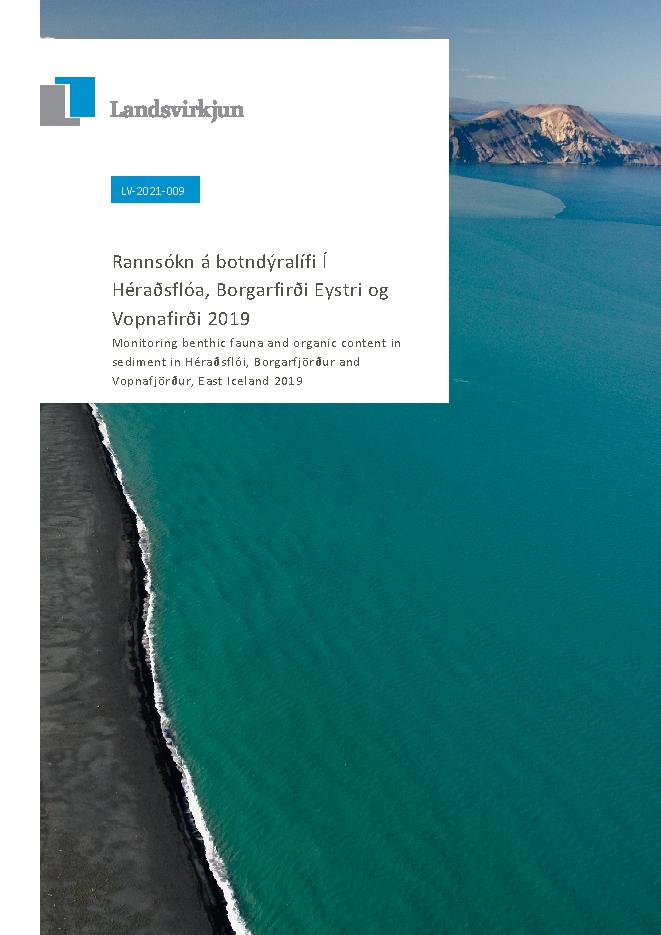
LV-2021/009 - Rannsókn á botndýralífi Í Héraðsflóa, Borgarfirði Eystri og Vopnafirði 2019
Eitt af skilyrðum Umhverfisráðherra fyrir leyfum til byggingar Kárahnjúkavirkjunar var að vakta dæmigerð botndýrasamfélög í Héraðsflóa. Árið 2006 (LV-2007/074) var þetta skoðað og í ljós kom að ekki var mikill munur á botndýrasamfélögum í Héraðsflóa og tveimur viðmiðunar stöðum (Vopnafjörður og Borgarfjörður eystri) en greinilegt samband var á milli botngerðar og botndýrasamfélaga. Þessi rannsókn er endurtekning á þeirri athugun sem gerð var þá og er gerð til að meta hvort breytingar hafi orðið með tilkomu virkjunar. Niðurstöður eru á svipuðum nótum 2006, þó komu fram smávægilegar breytingar milli ára á stöð 1 sem liggur næst ósum í Héraðsflóa hvað snertir botngerð, færri tegundir botndýra og breytingar á tegundasamsetningu. Þessar breytingar gætu tengst breytingum á framburði sem berst í Héraðsflóa en gætu einnig verið árstíðabundinn breytileiki.
You can view more material related to the indicator by clicking on the link above. (Icelandic)

